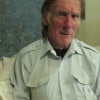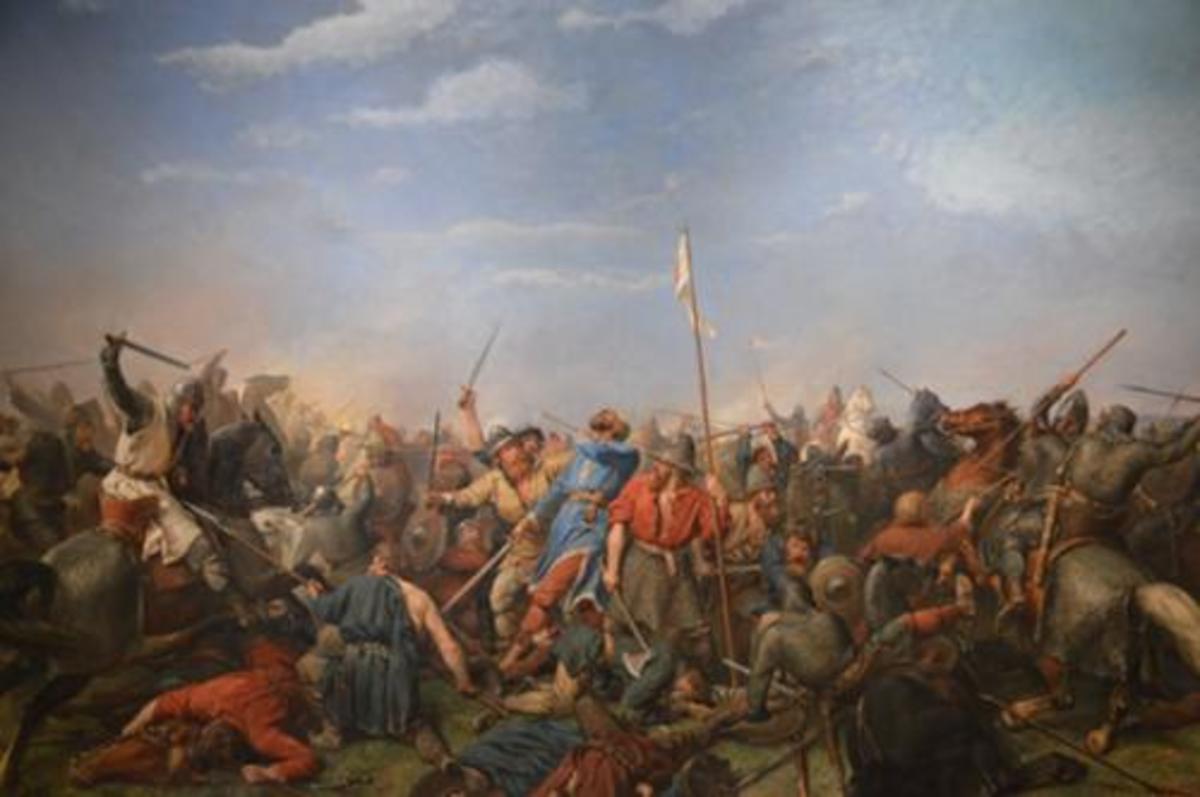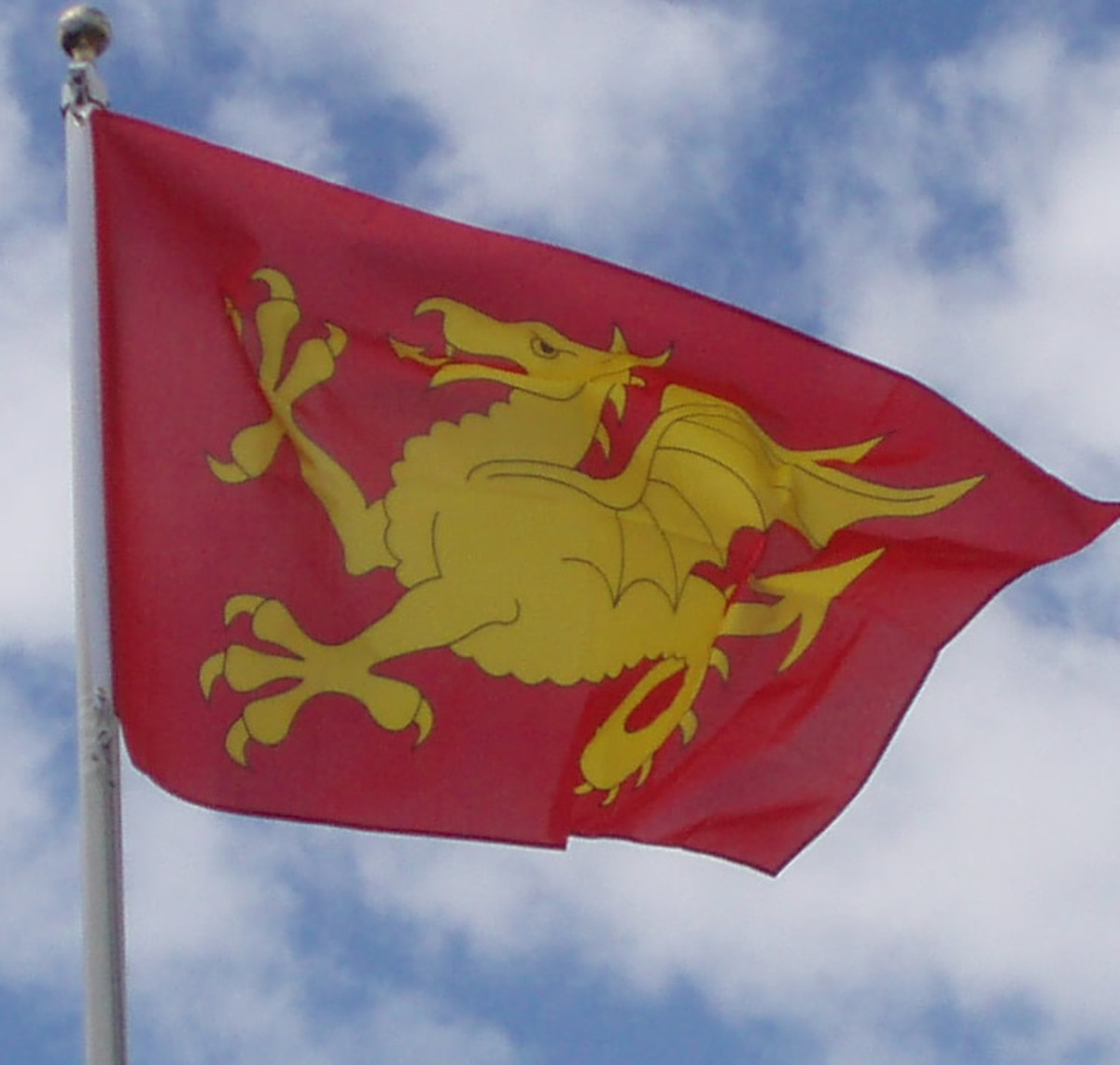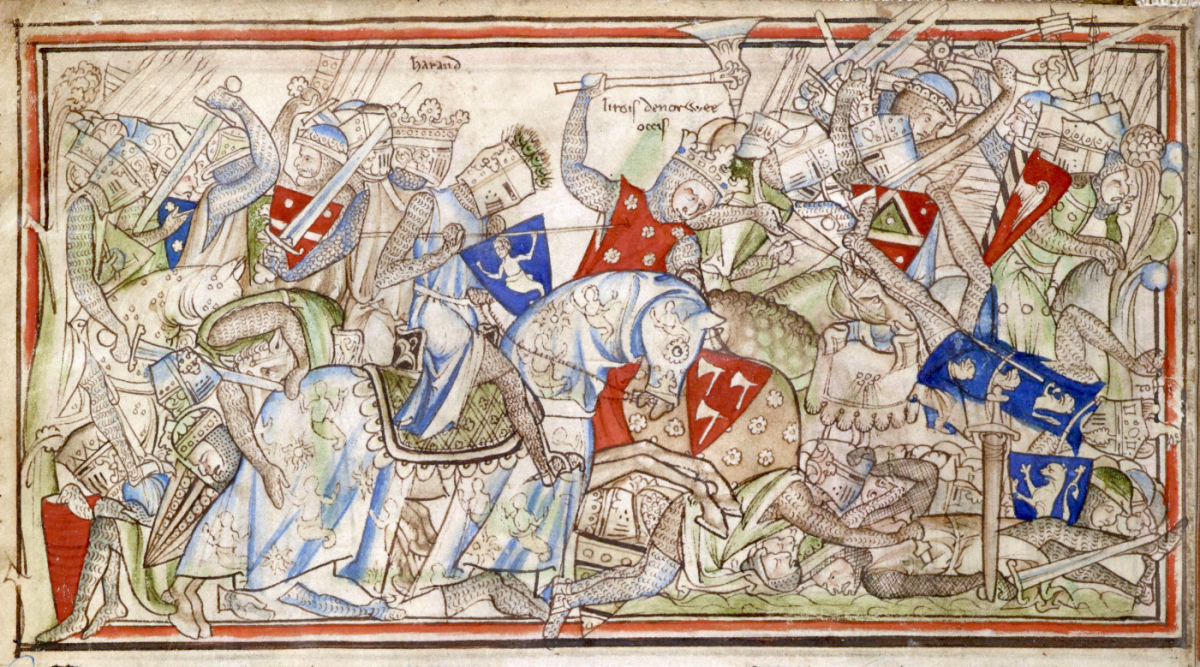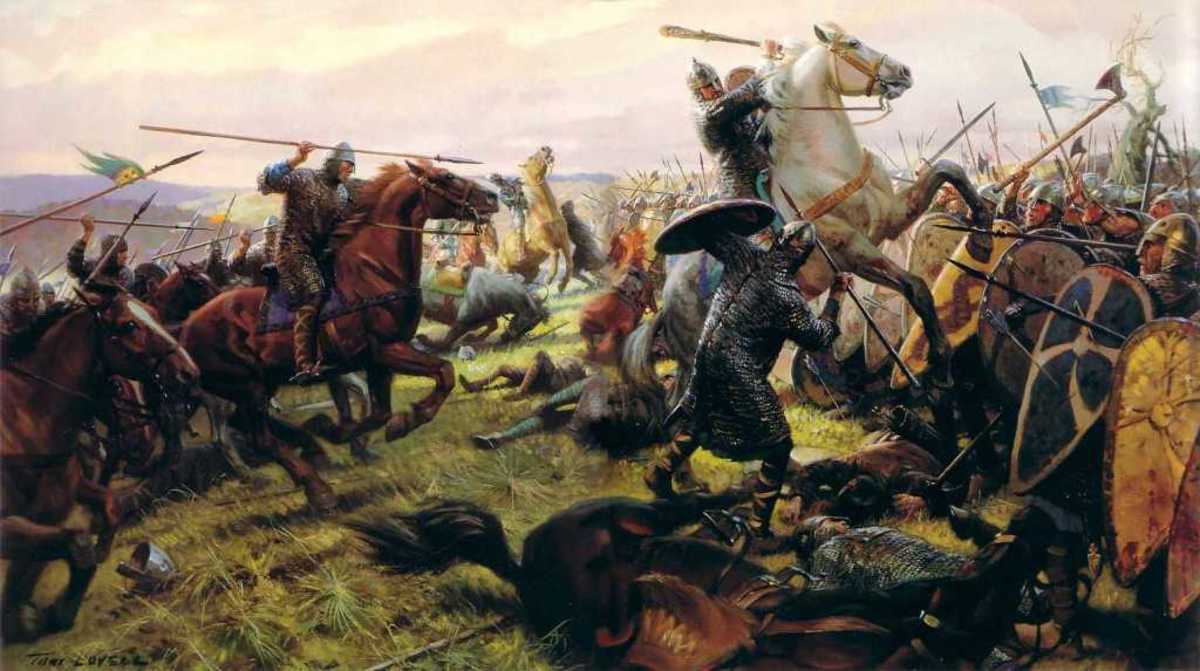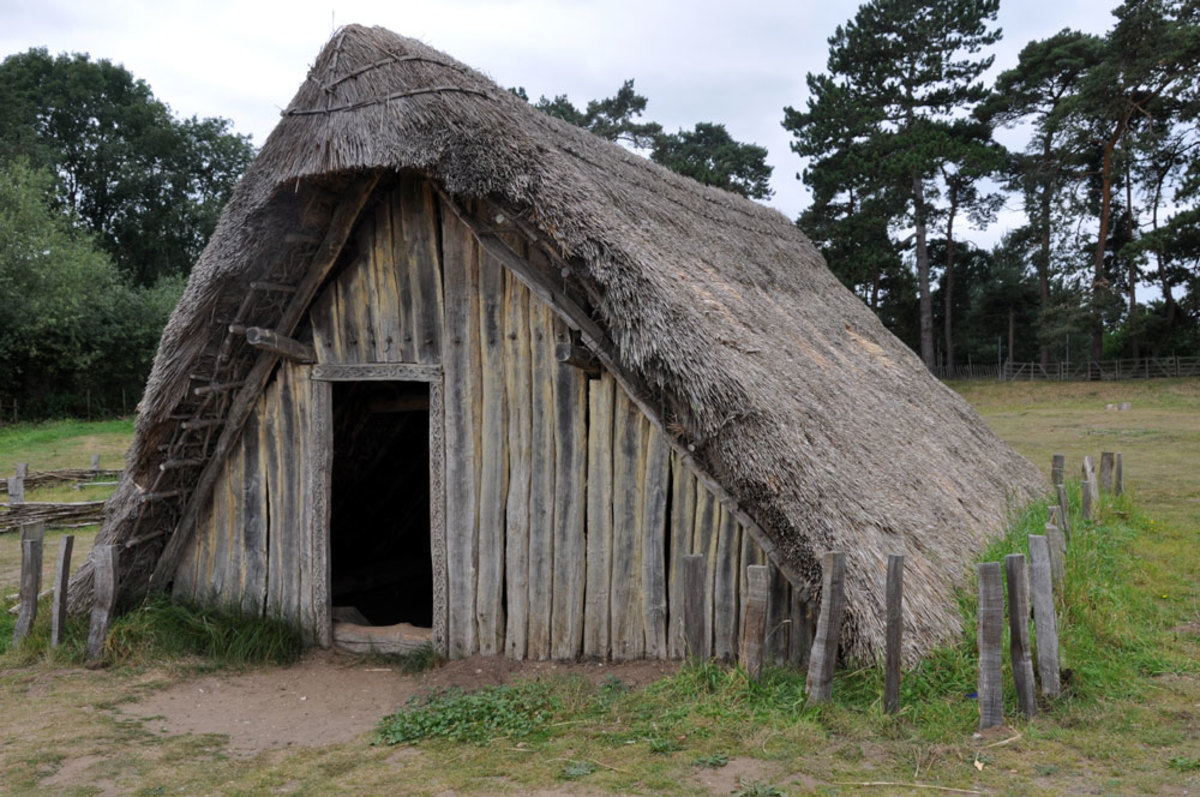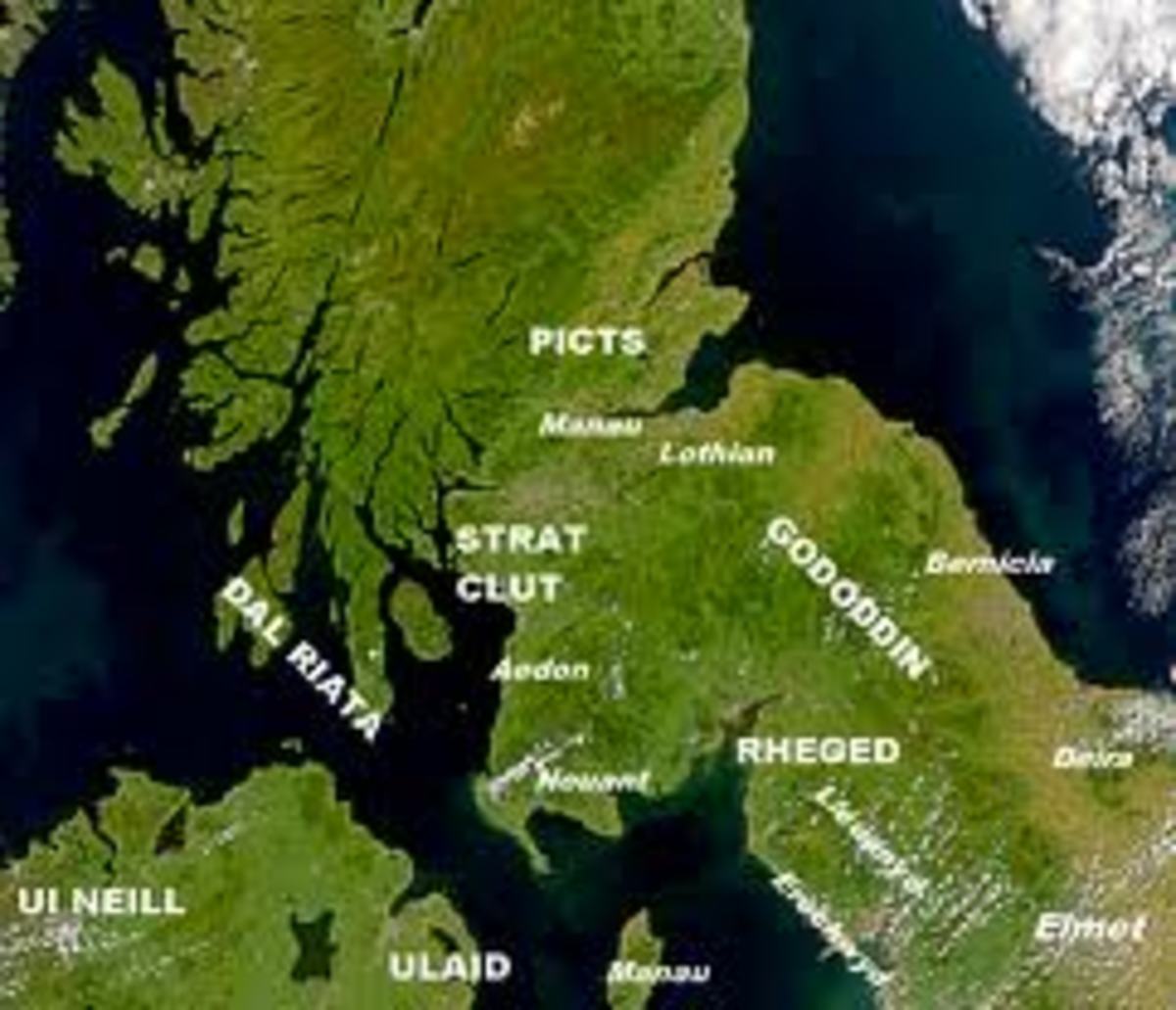- HubPages»
- Education and Science»
- History & Archaeology»
- History of Europe
Conquest - 3: Aftermath A.D. 1071, Struggle Against William Does Not End in the Fens Around Ely
A cold Fenland winter for Normans unused to freezing North Sea winter winds
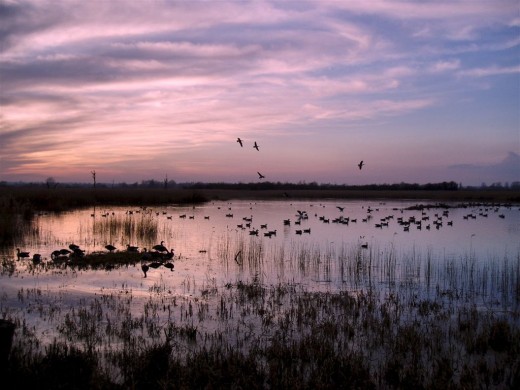
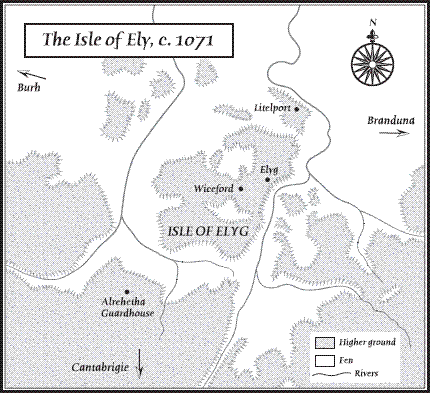
Harold's mother Gytha pleaded with the duke for the body of her fallen son...
But she was turned away. William joked that he would bury her son standing on the shore, looking out to sea for the foe.
It was Harold's common-law wife Eadgytha 'Swan-neck' who found him without the aid of the Brothers of Waltham who had been sent to help and keep her from harm by looters who still scavenged on the hill. She had looked long and hard for his corpse amongst his dead huscarls, where she was told they made their last stand around their lord. He lay prone where Count Eustace, Walter Giffard and Hugh de Pointhieu left him after taunting and torturing him in his dying hour. Eadgytha knew him by a mark on his back only she and his mother Gytha ever saw...
Aeldgytha his queen, was by this time in Chester with her brother Eadwin. Her only child by Harold was not yet born, the son she had named Harold. They were spirited away to Ireland, possibly taken in by Diarmuid who had helped Harold long ago in 1052. In 1068 he would provide Harold's sons Godwin, Eadmund and Magnus with men and ships to regain Wessex and raid in Devon.
Harold was buried behind the high altar of Waltham's church (the part destroyed by order of Henry VIII about five hundred years on during his purge on the abbeys). The original site of the high altar is now marked by a plaque mounted on a grey stone plinth amid the grass, several yards east of the present end wall of the church. As Earl of Wessex he had founded a secular college at Waltham headed by his friend Dean Wulfwin, later to be incorporated by a Norman benefactor into an abbey. The church was dedicated by Harold in thanks for being cured of a serious, life-threatening illness. This part of the county of Essex was largely owned by Harold as Earl of East Anglia before his father's death in AD1053, then by the church and latterly by the abbey until the dissolution.
The true heir to the throne of Eadward 'the Confessor' was Eadgar the aetheling, (grandson of Eadmund 'Ironside', great-grandson of Aethelred II 'Unraed') of an age with Robert fitz-William, the duke/king's eldest son. Eadgar was the only son of Eadward 'the Exile'. Born in western Hungary five years or so before his father's return to England, he had few friends, few links with the nobles around him beyond those he saw often at Eadward's Winchester court and the old king's hunting lodge on Thorney island where Eadward had his West Minster built.
When the old king died he was still only just into puberty, far too young to rule a kingdom now in dire peril with Harold's brother Tostig at large - brooding over losing his earldom with (as he saw it) the connivance of his own brother - as well as a Norman duke across the Channel who thought it was his due to be king after his kinsman Eadward's death. The Witan agreed that the old king had named Harold as his successor, a proven warrior and diplomat. When Harold was killed near Hastings Eadgar was suddenly drawn onto centre stage by the Witan as their choice of king. He was of the Cerdic line, after all.
Under guidance from Harold's stallari Ansgar, shire reeve (sheriff) of Middlesex, Eadgar would prove a worthy head of state - if only for a short time, but he was not to know that at the time - in the face of an attack on London Bridge by Duke William and five hundred of his mounted knights. Ansgar and several others who had survived the battle on Caldbec Hill now knew what the Normans were likely to do and were prepared with the rest of the Middlesex fyrd and those of the earls' retinues who had come to London too late to join Harold on his way south.
William left London Bridge with his tail between his legs after several failed attempts to force the shieldwall. Many of his knights fell to a hail of arrows that they had not countered at Caldbec Hill. Thry had set fire to houses in Southwark with an idea to blind-siding the bridge defenders by charging out of the light of the flames. The duke's next course of action was to withdraw and encircle London, moving westward through the southern shires, burning crops and killing live-stock as they went. More men joined William in the west from Southampton and Pevensey but they had to go as far west as Wallingford before they could cross the Thames (as well-guarded as the crossings were before then)! However, before anyone could check him, Archbishop Stigand surrendered to William here, hoping to hold on to his archbishopric. The rest of the Witan (the earls, bishops and Archbishop Ealdred of York) seeing what the Normans were up to, gave in to William at Berkhamstead. Despite inflicting heavy losses on William's cavalry at London Bridge, Eadgar was made to give way to William's demand to be crowned The only earls with any real experience of warfare, along with the cream of the warrior class, had fallen at Stamford Bridge and Caldbec Hill Finally abandoned even by Ansgar - who had also been pressured into giving his oath of allegiance to William - Eadgar had no-one near to support him. The Witan's surrender isolated Eadgar again and opened the way for William's coronation at Westminster on Christmas Day, AD1066 (still on the old Julian calendar, this would now be January 6th - as the Orthodox Christian calendar).
William took the youthful Eadgar, the young earls Eadwin, Morkere and Waltheof, and Archbishop Stigand to Normandy as hostages early in AD1067 after William had appointed his regents and given Tostig's helper Copsig the earldom of Northumbria (more on that elsewhere). In the autumn the new king returned with his hostages and his queen-to-be Matthilda. Whilst everyone fussed about the danger in the kingdom to the Duchess (as she still was), Eadgar and the young earls saw their chance to decamp. Eadgar took the road north with willing followers as well as Eadwin and Morkere. The two earls stopped in Mercia and the aetheling went on with his men, on to Cumbria and Scotland to join his mother Agatha and sisters Margarethe and Christina at the court of King Maelcolm.
A kinsman, Gospatric, was his only link to another way of possibly regaining the crown. However Gospatric was in Northumbria. Gospatric was of the Bamburgh 'clan', as was Osulf. Outside help to put him on the throne would only be possible from Maelcolm 'Canmore' or Diarmuid of Leinster. The Danish king Svein Estrithsson was an outside choice, but he himself had his eyes on the throne of England. He would want something in return for help that Eadgar might not want to - or be able to - give him. Svein had long ago asked for help from Eadward, as a distant kinsman through Harthaknut, and been turned down in his fight against Harald Sigurdsson. Earl Godwin had pleaded with Eadward... to no avail. Now Svein was interested in the goings-on in England. He reasoned he was entitled, as Knut's nephew and distant kinsman of Eadward, to some return for help to his English neighbours.
Maelcolm 'Canmore' had his eyes on Eadgar's sister - having met her at the court of King Eadward when he had fled Scotland after Duncan's death, fleeing from battle with Macbeothen - and wished for her hand in marriage. This family tie would plainly help Eadgar's bid for the kingship and he gave her away.
However, initial opposition to William centred on the south-west and the north of England was already seething. A co-ordinated campaign would be hard to bring about, given distances and terrain. The Church saw William as the true king now, having been consecrated by the venerated Ealdred. The might of the Church was thrown behind the new king. But the laity saw things differently. Eadric sought help from Gruffyth ap Llewellyn's nephews Bleddyn and his younger brother Rhiwallon to attack William fitzOsbern's new Hereford castle. No long after Exeter closed its gates to him in the winter of AD1067 and a siege followed in which many Normans fell. One of the thegns who believed William would not seek retribution let the Normans in and some of the defenders were executed on the burh walls. Harold's sons Godwin, Eadmund and Magnus sought the help of King Diarmuid and were given a fleet as well as an army of Dublin Danes (as Harold and Leofwin had done in AD1052) The arrogant new Flemish Earl of Northumbia was slain at Durham with his Norman garrison and York rose that same summer. Svein Estrithsson sent his sons and brother Jarl Osbeorn with a large fleet that put in on the Humber and helped defeat the Norman castellan William Malet with his garrison. After William razed much of the north and midlands things quietened down for a while until Hereward stirred things again with the help of many who had been at York the year before. The Danes fared little better, although Osbeorn let himself be bought off by William after the king gave up chasing them from one bank of the Humber to the other. Svein was furious with his brother and brought a new fleet, sending Osbeorn to the Wash to help the rebels under Herward sack Peterborough Abbey to prevent the Normans seizing the abbey's valuables. The monks were not convinced about Hereward's morives and were taken with the treasures back to Denmark. In a sea storm some ships and much of the treasure were lost, and only a few relics were brought back to be reinstated at Peterborough. Meanwhile Morkere and a number of nobles joined Hereward at his island fortress on the isle of Ely. Earl Eadwin sought to get help from King Maelcolm but was betrayed along with his faithful retainers by servants and killed on one of the river islands, trapped at high tide.
The siege lasted months, during which time Hereward destroyed many of the Normans' fortifications around the island. A causeway was built for William's knights to charge onto the island but gave way under them, catapulting most into the unfathomable depths of the swamp. Many chain mail-clad corpses were still being found in the marshes centuries later. Towers were built, and a witch bidden by William to cast spells on the defenders. She made a mistake at the end of her incantations of baring her cheeks and was rewarded by an arrow in them. A fire arrow followed and she fell to her death from the blazing wreck. A monk of Ely showed the Normans a way onto the island, and the siege was effectively over. Hereward and a number of friends escaped to the forests in the east midlands, then by ship away to Flanders. Many English nobles and wariors left for the east and joined the Varangian Guard in Byzantium to fight... the Normans under Robert Guiscard de Hauteville and his younger brother Bohemund, as well as the Turks and Bulgars etc.
In AD1074 Maelcolm was obliged to sign the Treaty of Abernethy, yielding to William's overlordship and effectively banishing Eadgar. The aetheling fled to Flanders, but came back to England and yielded to William. He stayed at William's court until AD1086, when he left for Apulia wih Robert, joining with Robert Guiscard's Normans. By AD1091 he was back again in Normandy, giving advice to William's son Robert . Later that year Eadgar brokered a peace between his brother-in-law Maelcolm and William 'Rufus', acting as envoy to the Scots in AD1093. After the death of the Scots' king, when the throne was seized by Dufnal, eadgar took up arms on behalf of his kinsman and namesake - Margarethe's son Eadgar - to put him on the throne. When Heanrig (Henry) I of England married Eadgar's niece Eadgyth he was suddenly in a position of power, yet he joined Robert again in Normandy and they fought Heanrig at the Battle of Tinchebrai in AD1106. Captured, Eadgar was later released, and mentioned last as living 'in retirement' in AD1125 in England.
The marshy Fens showed the Normans their cavalry was a liability
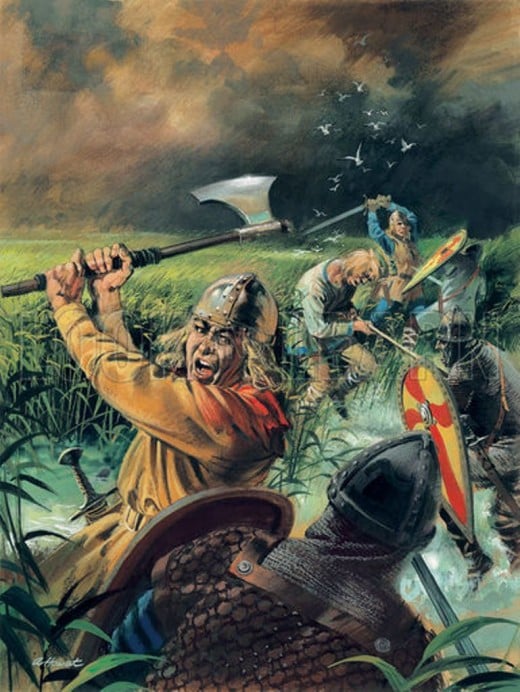
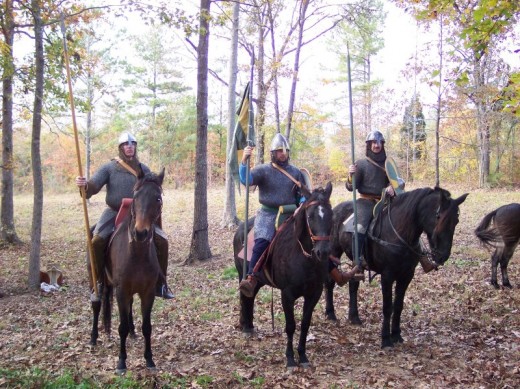
Fenland waterways, a haven for men on skiffs or in boats
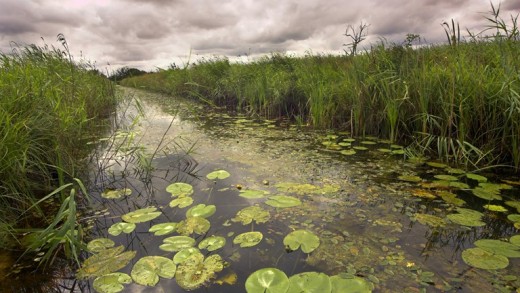
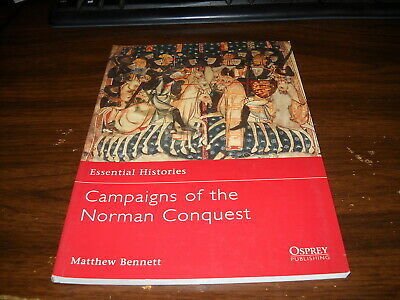
Another of the first rate Osprey military history books. This one in the Essential Histories series outlines what happened after Harold fell on Caldbec Hill near Hastings, the risings around the kingdom, the battles leading to the siege of Ely that ended early in 1071. This was by no means the end of William's campaigns in Britain. His next campaign saw King Malcolm of Scotland humiliated, with a threat of invasion should he harbour English fugitives such as the aetheling Eadgarthe rightful heir to King Eadward.
Threats from neighbours and across the sea
William had troubles with his underlings not only in England but also in Normandy and neighbouring territories such as Anjou, Maine and Brittany. These neighbours had the Frankish king Philippe to back them, and he was too strong for William to take on at this time.
Even with the English under 'control' this side of Berwick, William still felt he had to deal with King Malcolm III, 'Canmore'. After a hard campaign William forced Malcolm into signing a treaty at Abernethy in 1074, the desired effect being that he would not harbour his brother-in-law Eadgar or his followers.
He still had his Frankish neighbours to deal with, and there was a threat of another invasion from Denmark, this time by Harald Sveinsson. That saw the introduction of a new way to collect funds, the 'Demesde Books' (translated over the years as 'Domesday') in 1086, and a means of controlling his own barons.
In invading England in 1066 William thought his task would be easy on defeating Harold. He had to learn the hard way. Yet even when Hereward and friends evaded capture after the Normans took Ely, and many English noblemen such as Morkere and Sigewear4d 'Bearn' as well as Bishop Aethelwin of Durham were taken prisoner by William, resistance went on. This was the advent of the 'Green Men', the dispossessed and dissolute who gave rise to the Robin Hood legend.
Next - 2: The Rot Sets In
© 2012 Alan R Lancaster
